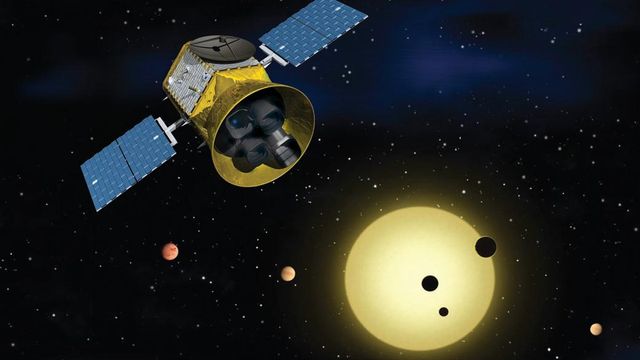TESS launches Monday to discover Earth-like exoplanets
The TESS mission is expected to find planets ranging from small, rocky worlds to giant planets, showcasing the diversity of planets in the galaxy.
Posted — UpdatedA 30-second launch window for NASA’s Transiting Exoplanet Survey Satellite opens Monday at 6:32 p.m. EDT. A backup launch window is available Tuesday at 6:15 p.m. EDT.
TESS continues the hunt for exoplanets with a focus on detecting Earth-sized and larger planets orbiting the nearest stars to our solar system, a mere 200 light years away. Led out of the Massachusetts Institute of Technology Kavli Institute for Astrophysics and Space Research, TESS will discover planets by watching stars for the tell-tale dips in the brightness of stars that indicate an orbiting planet regularly transiting across the face of its star.
In a 2-year survey of the solar neighborhood, TESS will monitor the brightness of those stars for the periodic drops caused by planet transits. The TESS mission is expected to find planets ranging from small, rocky worlds to giant planets, showcasing the diversity of planets in the galaxy.
TESS is the latest in a line of exoplanet hunters, building on the success of the Kepler Space Telescope in a big way. As of this morning, more than 70 percent of the confirmed planets in NASA’s Exoplanet Archive were found by the Kepler mission. Kepler used a “pencil-beam” survey, looking deep into several small fields covering only about 4 percent of the sky.
TESS will cover 85 percent of the sky during its 2-year-long primary mission. TESS’s field of view is 24 degrees by 24 degrees. For comparison, the full moon is about half a degree across.
Following launch, TESS will fly a never-before-used highly elliptical orbit that completes one circuit every 13.7 days, or half the orbital period of the Moon. This orbit maximizes the amount of sky the TESS spacecraft can image while keeping the spacecraft in a safe thermal and radiation environment. TESS will transmit data each time it passes closest to Earth, above the orbit of geosynchronous weather and communications satellites.
The Air Force’s 45th Weather Squadron forecasts 80 percent go weather conditions for the launch. Weather in Florida is similar to what we are experiencing here in North Carolina with isolated strong thunderstorms passing through last night along the same front which extended from the great lakes to the Gulf of Mexico. The primary concern is winds developing behind that front.
NASA's live coverage of the launch begins at 5 p.m. EDT. SpaceX will also broadcast a live webcast of the mission on its YouTube page, beginning about 6:15 p.m., and WRAL.com will carry the launch live online and in the WRAL News app.
Related Topics
• Credits
Copyright 2024 by Capitol Broadcasting Company. All rights reserved. This material may not be published, broadcast, rewritten or redistributed.





